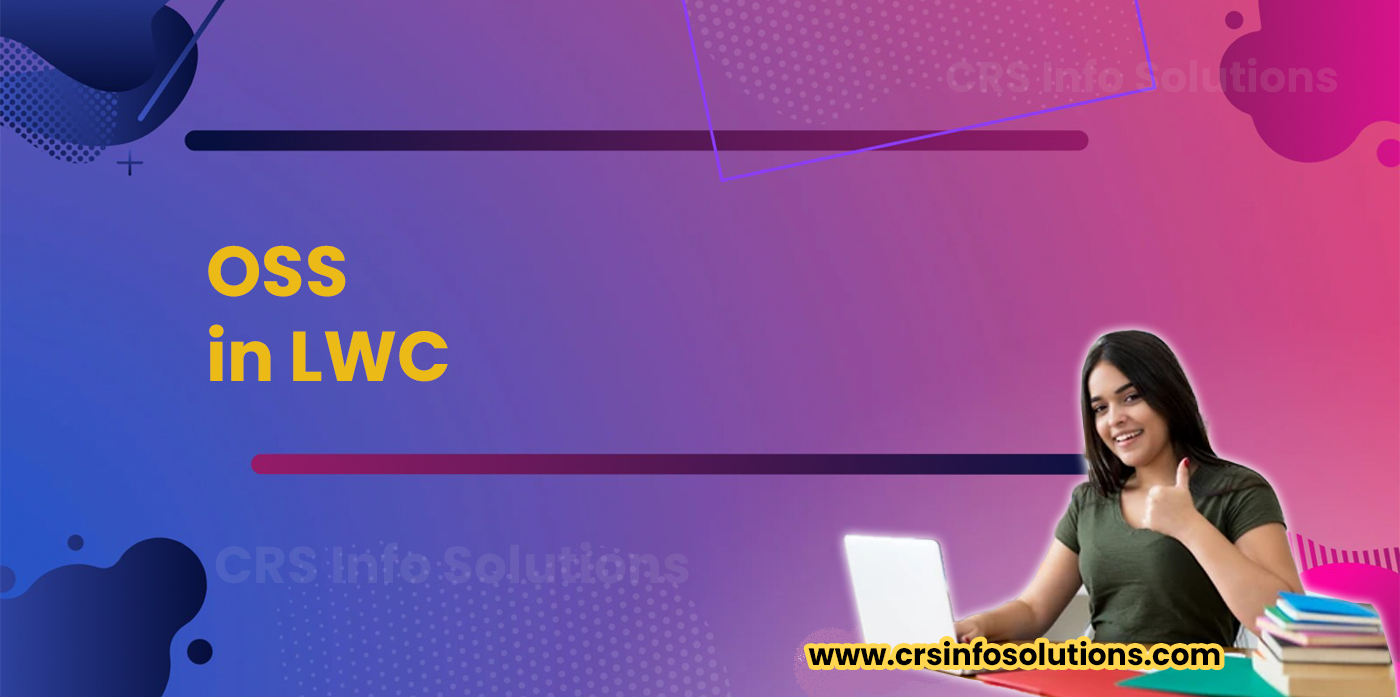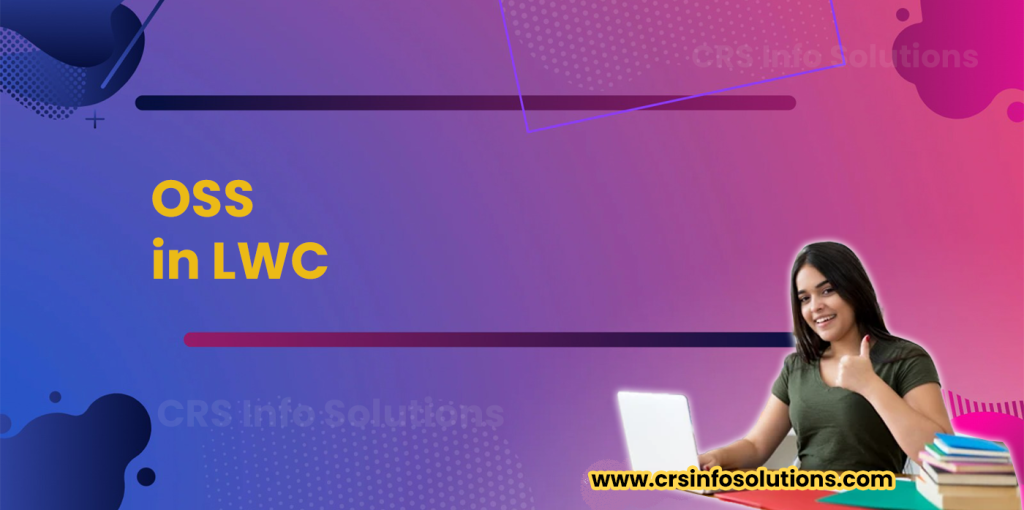
LWC OSS

Lightning Web Components Open Source (LWC OSS) is Salesforce’s open-source framework that allows developers to build fast, reusable web components for modern web applications. Originally designed for the Salesforce platform, LWC leverages the latest web standards, such as Web Components, ES6+, and modern JavaScript, enabling developers to create high-performing and lightweight applications. With the introduction of LWC OSS, Salesforce has extended the framework beyond its platform, allowing developers to use it in any environment, including other cloud services, third-party platforms, and even standalone applications. This move has made LWC a versatile tool in the broader web development ecosystem, attracting a wide range of developers who are interested in building components that can be reused across various projects and platforms.
The open-source nature of LWC OSS offers a significant advantage to developers by providing transparency and flexibility. Developers can inspect, modify, and contribute to the LWC codebase, fostering innovation and collaboration within the community. Furthermore, LWC OSS encourages the adoption of best practices in web development by aligning closely with the standards set by W3C, ensuring that the components built are compatible with other modern web technologies. As a result, LWC OSS not only empowers Salesforce developers to create more efficient and scalable applications but also opens up new possibilities for web developers who want to integrate Salesforce’s cutting-edge technology into a variety of web applications outside the Salesforce ecosystem.
Why was it required?
LWC OSS (Lightning Web Components Open Source) was required to address the need for a modern, standards-based framework that could extend beyond the Salesforce platform and integrate with a broader range of web technologies. As web development rapidly evolved, there was a growing demand for frameworks that adhered to the latest web standards, enabling developers to build fast, reusable, and scalable components that could be used across different platforms and environments. By open-sourcing LWC, Salesforce empowered developers to leverage the powerful features of Lightning Web Components in any context, not just within Salesforce, fostering innovation, improving interoperability, and expanding the potential use cases for these components across the web development ecosystem. This move also positioned Salesforce as a leader in promoting modern web standards while offering developers the flexibility to create high-quality web applications that are not confined to a single platform.
Read about: Getters and Setters in LWC
How is LWC OSS different than managed LWC?
LWC OSS (Lightning Web Components Open Source) differs from managed LWC (Lightning Web Components within Salesforce) in several key ways:
Managed LWC: Is governed by Salesforce’s platform updates and releases, with less flexibility for direct code modification by users.
Platform Independence:
LWC OSS: Can be used outside the Salesforce platform, allowing developers to create web components that can run in any environment, such as other cloud services, third-party platforms, or standalone web applications.
Managed LWC: Is tightly integrated with the Salesforce platform, specifically designed to work within Salesforce’s ecosystem, including Salesforce CRM and Experience Cloud.
Deployment and Hosting:
LWC OSS: Requires developers to manage their own deployment, hosting, and infrastructure, as it operates independently of Salesforce’s managed services.
Managed LWC: Is hosted and managed entirely within the Salesforce platform, benefiting from Salesforce’s built-in security, scalability, and infrastructure.
Development and Tooling:
LWC OSS: Utilizes standard web development tools and workflows, including modern JavaScript, npm, and other front-end frameworks, offering flexibility in development.
Managed LWC: Relies on Salesforce-specific development tools like Salesforce CLI, Visual Studio Code with Salesforce extensions, and the Salesforce metadata API, providing a more integrated development experience for Salesforce environments.
Access to Salesforce Features:
LWC OSS: Does not have direct access to Salesforce-specific features such as Apex, Salesforce data models, or declarative tools like Flow and Process Builder.
Managed LWC: Has seamless access to Salesforce features, allowing components to interact directly with Salesforce data, utilize Apex, and leverage other Salesforce-native services.
Community and Contributions:
LWC OSS: Encourages community contributions and modifications, with the source code available for inspection, enhancement, and customization.
· Compile Time Differences
- No experimental API works in managed LWC
- Dynamic imports are not allowed ( We can only add static imports at the top of the file) Dynamic imports allow us to import any module or function on meeting certain criteria

- ES Lint rules are enforced ( by default base level rules) Linting is nothing but a statical analysis of code to report any syntax error or any bad constructs used in code
- $A is prohibited
- All the @salesforce imports are validated against the org (for example apex methods)
· Run time Differences
- In managed LWC we are using synthetic DOM to support old browsers
- You cant access the host element while in OSS you can.
- LWC modules are evaluated inside the lightning locker.
| Feature/Aspect | LWC OSS | Managed LWC |
|---|---|---|
| Platform Independence | Can be used outside Salesforce, in any environment | Exclusively within the Salesforce platform |
| Deployment and Hosting | Requires self-managed deployment and infrastructure | Hosted and managed by Salesforce |
| Development and Tooling | Uses standard web development tools (e.g., npm, JS) | Relies on Salesforce-specific tools (e.g., Salesforce CLI) |
| Access to Salesforce Features | No direct access to Salesforce features like Apex or data models | Full integration with Salesforce features and services |
| Community and Contributions | Open-source, with community-driven contributions | Governed by Salesforce updates and platform releases |
Read about: Attributes and Properties in LWC
Note: Because of synthetic DOM you never see #shadowRoot in chrome while inspecting the components
FAQs
Are Lightning Web Components open source?
Yes, Lightning Web Components (LWC) are open source. Salesforce released LWC as an open-source framework, allowing developers to use it outside the Salesforce platform. This move enables developers to build reusable, high-performance web components that adhere to modern web standards. By open-sourcing LWC, Salesforce has extended its utility beyond its ecosystem, fostering innovation and collaboration within the broader developer community. Developers can now contribute to the LWC codebase, customize it, and implement LWC in various environments, making it a versatile tool in the web development landscape.
What are Lightning Web Components (LWC)?
Lightning Web Components (LWC) is a modern web framework developed by Salesforce to build responsive, efficient, and reusable web components. LWC leverages the latest web standards such as custom elements, shadow DOM, and ES6+ JavaScript, enabling developers to create high-performance user interfaces on the Salesforce platform. It represents the evolution of Salesforce’s component-based architecture, providing a lightweight alternative to the older Aura framework. LWC is designed to work seamlessly within Salesforce’s ecosystem, but with its open-source release, it can now be used to build web components in any context or platform.
Where can I find Lightning Web Components?
Lightning Web Components (LWC) can be found on several platforms. For Salesforce-specific implementations, they are available directly within Salesforce’s developer tools, such as Salesforce CLI and Visual Studio Code extensions. For open-source projects, LWC can be accessed through GitHub, where Salesforce has published the LWC OSS repository. This repository includes the source code, documentation, and examples, allowing developers to explore, contribute to, and use LWC outside the Salesforce environment. Additionally, Salesforce’s Trailhead platform offers modules and resources for learning and building with LWC.
Can I use Lightning Web Components outside Salesforce?
Yes, you can use Lightning Web Components (LWC) outside Salesforce. With the introduction of LWC OSS (Open Source), Salesforce has made it possible to implement LWC in any web environment, not just within the Salesforce platform. This flexibility allows developers to create high-performance, reusable components that adhere to modern web standards and use them in various applications, including standalone web apps, other cloud services, and third-party platforms. The open-source nature of LWC encourages broader adoption and integration into different web projects beyond Salesforce’s ecosystem.
What is the difference between Lightning Web Components and Lightning Aura Components?
The main difference between Lightning Web Components (LWC) and Lightning Aura Components lies in their underlying architecture and performance. LWC is built on modern web standards like custom elements and shadow DOM, making it more efficient, lightweight, and easier to learn. It provides better performance and aligns closely with native browser APIs. On the other hand, Lightning Aura Components is an older framework that uses a proprietary model, which is bulkier and requires more resources to run. LWC is the recommended framework for new development, while Aura is mainly maintained for legacy applications.
Is LWC hard to learn?
Learning Lightning Web Components (LWC) can be challenging for those new to web development, but it is not inherently difficult, especially for those with experience in modern JavaScript frameworks. LWC is built on web standards like JavaScript, HTML, and CSS, making it accessible to developers familiar with these technologies. Salesforce provides extensive documentation, tutorials, and Trailhead modules to help developers learn LWC. With regular practice and a solid understanding of JavaScript, developers can quickly become proficient in LWC, allowing them to create efficient, high-performance components on the Salesforce platform.
For those looking for Salesforce learning, CRS Info Solutions provides an extensive Salesforce training program designed to enhance your skills and career opportunities. Explore our job-oriented Salesforce course to gain practical, hands-on experience, real-time projects included. Our training covers all essential aspects of Salesforce, ensuring comprehensive learning, providing daily notes, interview questions, certification preparation and job prep guidance. Enroll for Free demo today!

